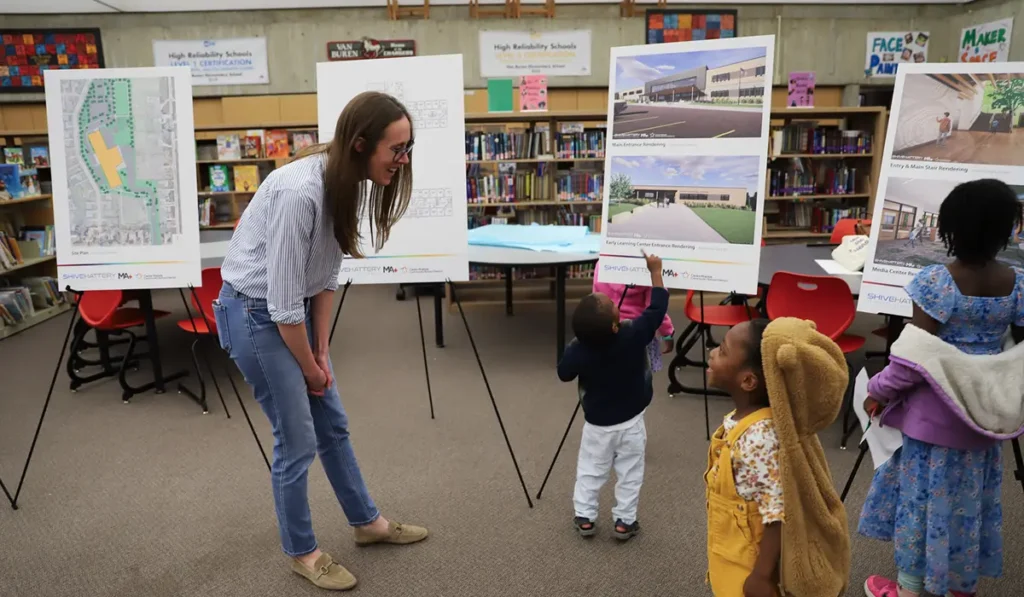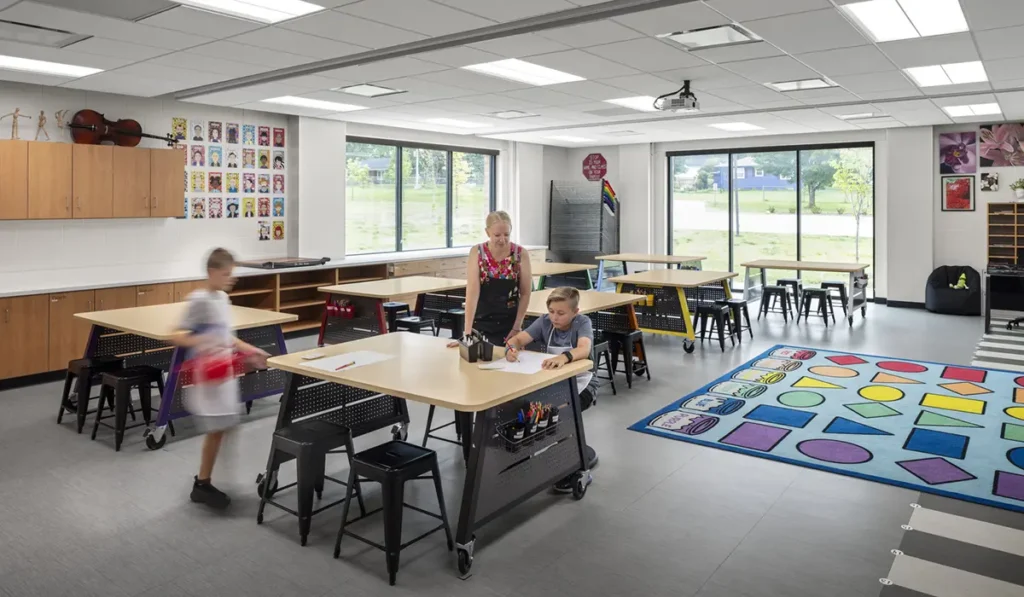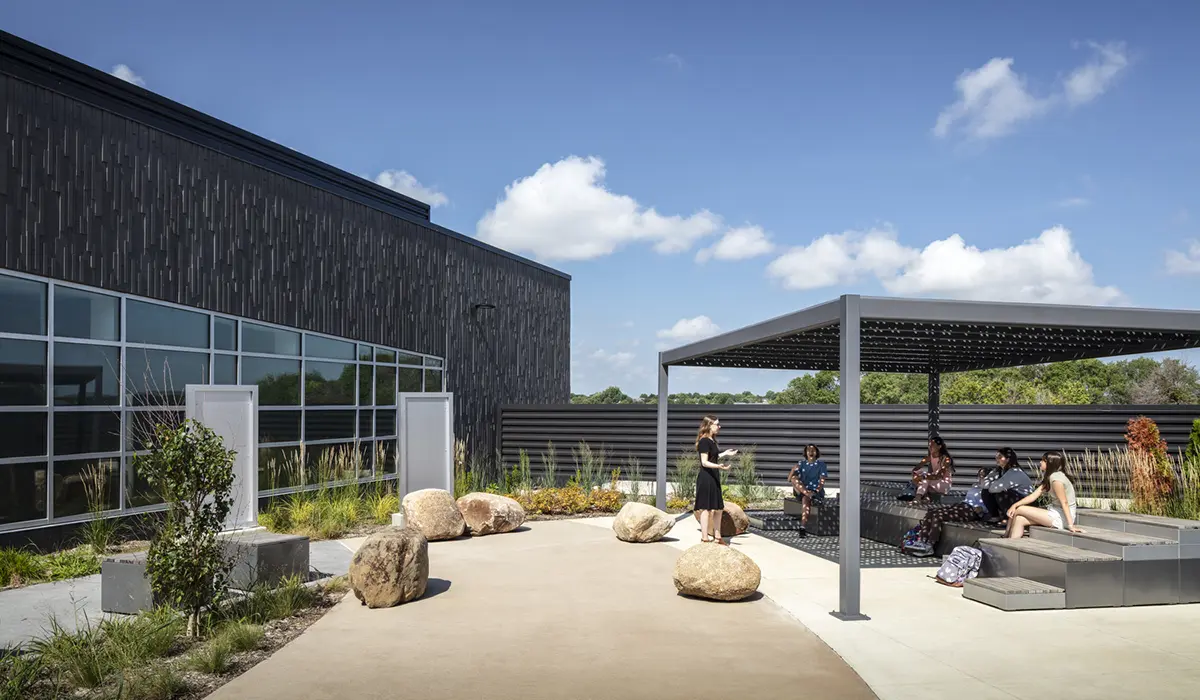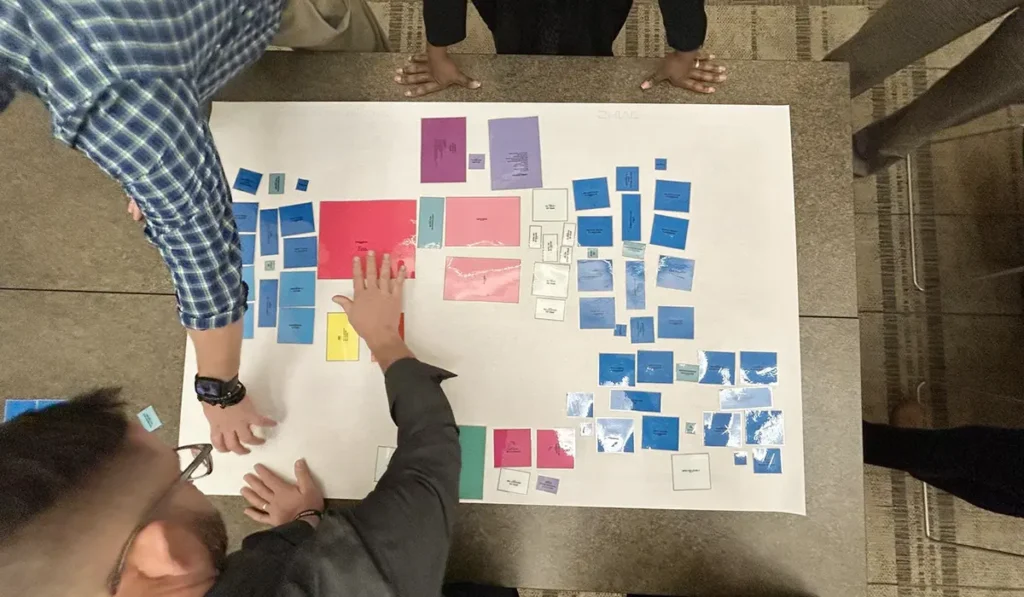AI in the Classroom
Designing for Curiosity, Equity, and Belonging
The traditional classroom with its rigid schedules, lecture-based instruction, and limited autonomy was originally modeled after military systems. It wasn’t built with how children learn best in mind.
Shive-Hattery architect Jerica Grabner sees this moment as an opportunity to thoughtfully reimagine how learning environments can better support today’s students and the future they’re stepping into.
“When I think back to my own experience as a student, I often felt like I was just going through the motions,” she said. “I wasn’t disengaged, I just didn’t always feel connected. That’s why I’m passionate about creating spaces that spark curiosity and help students feel like they belong.”

Design starts with listening. Shive-Hattery Architect Jerica Grabner connects with students and staff to understand what learning feels like today.
Through the ALEP program, Grabner discovered the power of project-based learning. When students are free to follow their interests, they become more engaged – and more curious.
Artificial intelligence is accelerating a shift toward student-centered learning. But it’s not just about devices or software. It’s about:

AI supports personalized learning, but the teacher-student relationship remains at the heart of education.
As Sal Khan of Khan Academy puts it, AI is a teaching assistant, not a replacement. It expands access to high-quality tutoring, especially for underserved communities, while keeping teachers at the center of learning.
What kind of learning environments will prepare students to absorb information, think critically, collaborate, and adapt in a world shaped by AI?
A pilot program tests this shift in the Cedar Rapids Community School District, where students are given more choice in how they engage with content, supported by teachers who act as guides rather than gatekeepers to knowledge.
“Students supported each other within their groups to ensure everyone understood and kept up,” Grabner said. “When one person understood a concept, they would check with others for comprehension, prompting discussion about different perspectives.”
While not part of the pilot, designs for Hoover Elementary and Van Buren Elementary reflect a shift toward collaboration, flexibility, and belonging.
This kind of peer-driven, student-centered learning—supported by AI—requires a different kind of space.
Flexibility is the defining design principle in the AI era. Classrooms must adapt to technologies that don’t yet exist and instructional models that will continue to evolve.

Flexible learning environments support a range of teaching styles and student needs.
School leaders must design spaces that are ready for what’s next.
These environments don’t just support AI, they help students. They create space for curiosity, connection, and joy.
AI can potentially widen opportunities for students only if schools intentionally plan for it.
Without thoughtful design, AI adoption could deepen existing inequities. For example, not all existing spaces in a school will be a good candidate for a retrofitted solution, which doesn’t accommodate the entire school population to receive equal access to those amenities.
If space planning is overlooked, those inequities may persist—or worsen.
Grabner considers her responsibility as an architect to assist districts in addressing these challenges by:

Designing for the needs of future students and educators ensures learning environments reflect real needs and shared goals.
AI can support 21st Century learners but can’t see the whole human context. It doesn’t recognize when a student is anxious, distracted, or quietly falling behind—or when they’re beaming with pride after solving a tough problem, laughing with classmates during a group project, or finally feeling like they belong.
Teachers do.
They notice the subtle shifts in energy, the unspoken questions, and the emotional highs and lows that shape a student’s day.
That’s why AI will only make the educator’s role more essential.
“My mother worked as a paraprofessional, supporting students with disabilities throughout their educational journey. Those stories, and my own experiences, reinforce a belief that every student deserves to feel seen, supported, and inspired.”